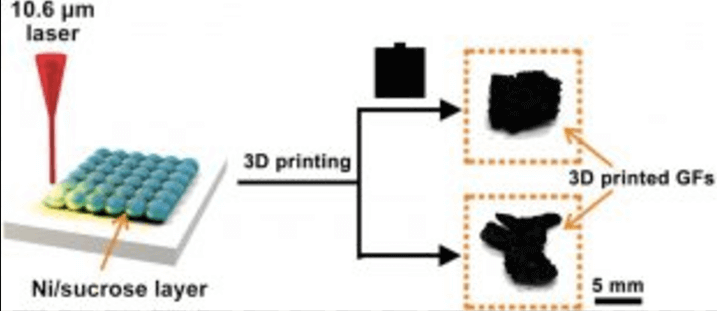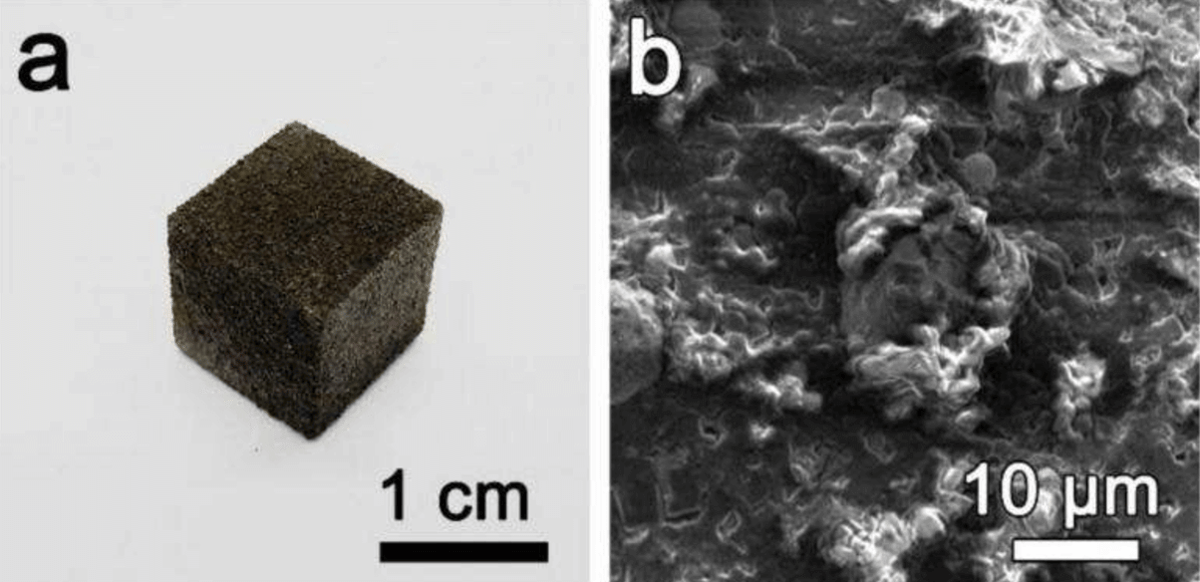Nanotechnologists use sugar and 3D printing to create centimeter-sized blocks of graphene. The new process could benefit future industry as a cheap technique to bulk manufacture the material.
In a study hailed as a “first of its kind”, researchers from Rice University and Tianjin University have made useful quantities of graphene at room temperature with simple base materials. The research involves laser 3D printing, and yields tiny 1cm cubes of graphene.
This breakthrough could lead to producing industrially useful quantities of graphene. Until now, numerous research teams have struggled to find a simple ways of creating the mechanically strong and electrically useful wonder material in justifiable quantities.
Commonly produced in sheets only an atom thick, the material has the potential for use in nanoelectronics, as aircraft de-icers and in the medical industry for purposes such as bone implants. However, such industrial applications require bulk quantities of graphene in a 3D form.
Rice University chemist James Tour, co-corresponding author of a paper detailing the discovery, explains:
“We have shown how to make 3D graphene foams from nongraphene starting materials, and the method lends itself to being scaled to graphene foams for additive manufacturing applications with pore-size control.”

3D Printing Graphene Foam with Sugar
In 2016 the researchers already proved the capability to create 3D graphene foam. However, that foam, reinforced with carbon nanotubes, requires a difficult process involving a pre-fabricated 3D mold, and chemical vapor deposition (CVD) step reaching 1,000-degree Celsius.
For this new study the researchers used selective laser sintering 3D printing tech to fabricate the blocks of graphene. Most noteworthy though is that the only base ingredients needed are powdered sugar and nickel powder.
The efficient yet simple process requires neither a mold or CVD treatment. Instead, a laser shines on the powder mixture, causing the sugar to decompose into a carbon source. The nickel powder then acts as a catalyst, prompting this carbon to form as graphene.
Like any SLS process, the 3D object is forms layer by layer as the laser goes back and forth. Because of this, the result is a foam which is low-density with large pores. Co-lead author Yilun Li, adds:
“The 3-D graphene foams prepared by our method show promise for applications that require rapid prototyping and manufacturing of 3D carbon materials, including energy storage, damping and sound absorption.”
Source: Rice News

License: The text of "Scientists Use Sugar in Breakthrough 3D Printing Graphene Foam" by All3DP is licensed under a Creative Commons Attribution 4.0 International License.